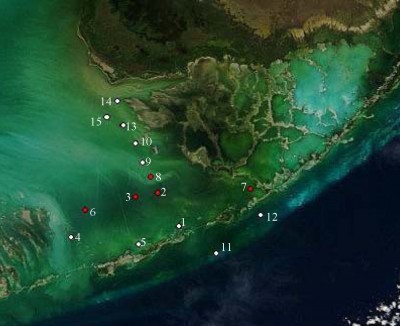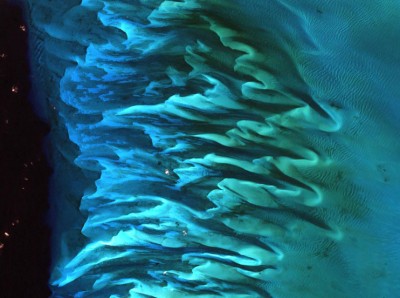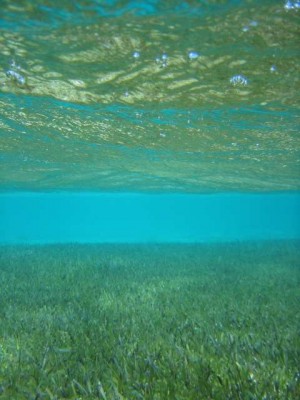The benthic environments along coastal margins are changing at an alarming rate. Seagrasses are particularly vulnerable to anthropogenic degradation of coastal environments resulting from eutrophication, dredging, and watershed modifications that reduce water clarity and stimulate blooms of nuisance algae. We have spent several decades evaluating and developing algorithms for using remotely sensed ocean color to map the seafloor and estimate benthic constituents and productivity in optically shallow water. We have mapped the seafloor with hyperspectral aircraft and satellites including research to:
- Develop and validate algorithms for estimating benthic productivity from seagrass and sediment from the large optically shallow carbonate sediment basins (Florida Bay, Bahamas) to turbid waters (Elkhorn Slough, Long Island Sound)
- Conduct field investigations to validate approach using hyperspectral airborne imagery including benthic reflectance
- Lead a benthic reflectance working group for the International Ocean Colour Coordinating Group


